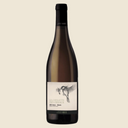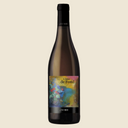Organic & biodynamic wines — lovingly sourced from small French vineyards.
- Free Shipping on Orders Over $149
- Authentic French Wines
- Easy and Secure Checkout
- Sourced from Small Sustainable Vineyards
- Free Shipping on Orders Over $149
- Authentic French Wines
- Easy and Secure Checkout
- Sourced from Small Sustainable Vineyards
- Free Shipping on Orders Over $149
- Authentic French Wines
- Easy and Secure Checkout
- Sourced from Small Sustainable Vineyards
La Cueillette Des Oiseaux - Anjou Blanc 2022
Wine Details & Winemaking
Type: White
Alcohol: 13%
Vintage: 2022
Size: 750ml
Closure: Cork
Varieties: 100% Chenin Blanc
Structure: Medium-bodied
Terroir: The vines of La Cueillette des Oiseaux are grown on a distinctive terroir of sand and gravel over shale soils in the Anjou region. This combination of soil types allows the vine roots to penetrate deeply, ensuring they are resilient to both water scarcity and excess, resulting in grapes of exceptional quality.
Harvest: The grapes for La Cueillette des Oiseaux are hand-harvested in 12 kg perforated crates, ensuring careful selection. A few days before the harvest, negative sorting is performed, leaving only the healthiest bunches for the final selection. This method ensures that the vine's energy is fully directed toward the remaining, perfectly ripe fruit.
Winemaking: The winemaking process at Le Fief Noir is focused on preserving the purity of the fruit and its expression of the terroir. After manual harvest, the grapes undergo direct pressing with a pneumatic press, and the juice is separated before fermentation.
Fermentation: Takes place in stainless steel vats with indigenous yeasts, which contributes to the wine's complexity and sense of place. Malolactic fermentation is allowed to occur, softening the wine and enhancing its texture.
Aging: The wine is aged in vats for 6 months, with weekly lees stirring to add richness and depth.
Tasting Notes / Food Pairing & Cellaring
On the Nose: La Cueillette des Oiseaux opens with an expressive nose, featuring delicate notes of brioche, ripe pineapple, and a flinty mineral edge. This complexity is a hallmark of the wine’s terroir, where the balance of fruit and mineral characteristics is striking.
On the Palate: The palate is marked by a round, balanced mouthfeel. The minerality sensed on the nose is present on the palate as well, complemented by a freshness that carries citrus zest notes through the finish. The wine is medium-bodied with a soft texture and crisp acidity, offering a harmonious balance between fruit, acidity, and minerality.
Pairing & Cellaring: La Cueillette des Oiseaux 2022 is an excellent companion for a variety of dishes, from delicate seafood to rich vegetable-based meals. Pair it with risotto with scallops, or sea bass stuffed. It also pairs wonderfully with cheeses.
This wine has medium-term cellaring potential to preserve its vibrant freshness and minerality, though it may also develop additional complexity with age.

La Cueillette Des Oiseaux - Anjou Blanc 2022
You May Also Like
Frequently Asked Questions
Direct pressing involves gently pressing whole grape clusters to extract juice without extended skin contact.
A pneumatic press applies even, gentle pressure, preserving the freshness and delicate aromas of the grapes.
This method is particularly effective for creating clean, vibrant wines that highlight the purity of the fruit.
Malolactic fermentation is a natural process where sharp malic acid in the wine is converted into softer lactic acid.
This transformation smooths the wine's acidity, giving it a rounder texture and a creamier mouthfeel.
Lees stirring, or bâtonnage, involves mixing the fine sediment (lees) left after fermentation into the wine during its aging process.
This technique adds texture, body, and richness while enhancing the wine's complexity, resulting in a smoother, more balanced final product.






